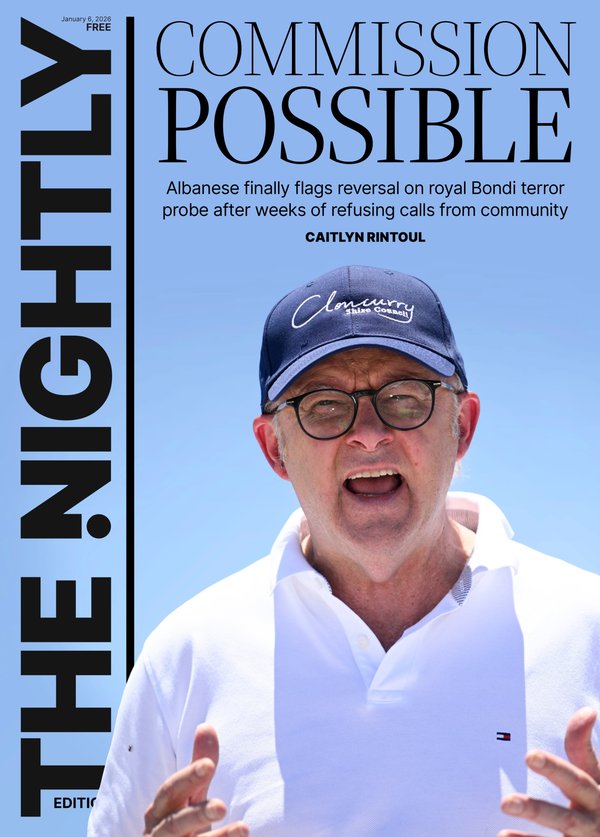Treasurer Jim Chalmers says Federal Budget not only contributor to lower inflation, interest rate cuts

Treasurer Jim Chalmers has downplayed suggestions the Federal Budget has the largest role to play for besieged households seeking cost-of-living relief after the Reserve Bank’s caution that interest rates may have to stay on hold for longer.
Some economists, including former RBA governor Philip Lowe, have also suggested another rate hike may be needed, while the RBA’s own fresh forecasts presume rates will stay on hold until next year.
According to comparison site RateCity, average mortgagees would cop a $112 monthly hit on a $750,000 loan if the next RBA move is a hike in November. If that transpired, repayments would have increased $1927 per month since rate hikes began in May 2022.
Sign up to The Nightly's newsletters.
Get the first look at the digital newspaper, curated daily stories and breaking headlines delivered to your inbox.
By continuing you agree to our Terms and Privacy Policy.If the first move was a cut in March next year, a mortgagee on the same loan size would get just $109 relief per month, leaving monthly repayments of $5208.
For those with a $500,000 loan, a November hike would add $74 a month for a total of $1284 in increases since May 2022, while for a $1m loan, it would be $149 and $2569, respectively. A cut would deliver $73 or $146 monthly relief, respectively.
Dr Chalmers on Wednesday said he did not “precisely” see that he was trying to deliver a Budget that led to interest rate cuts this year, by lowering inflation.
“But I do see a big part of our role here is to make sure, particularly at the front end of the Budget, that we are doing what we can to take pressure off inflation,” he told ABC Radio, noting the rate had “come off quite considerably” over the past two years.
Analysts are watching the Budget for potential fuel to already overheated inflation.
Morgan Stanley Australia economist Chris Read expects no rate moves at all this year but said risks were skewed towards an increase.
“The risk is higher later this year, in our view, given an expected fiscal-driven acceleration in the economy,” he said. “The Government Budget next week will therefore be important in assessing the RBA outlook.”
AMP chief economist Shane Oliver said the RBA would be alert to any stimulus from the Budget for the next year or so and as well as the impact of the July 1 tax cuts on consumer spending and confidence.
Separately, it will also assess the minimum wage decision by the Fair Work Commission, due in coming months. The Federal Government has, for the third successive year, urged the commission to lift minimum wages above inflation.
KPMG chief economist Brendan Rynne said what the economy “really needs now” was for the Budget to not add to aggregate demand, and should be neutral — by not increasing spending — or slightly contractionary, by cutting it.
“A Budget in expansion mode will risk inflation taking off, with fiscal policy pressing even harder on the accelerator, while monetary policy is pushing on the brakes,” he said. “Already government spending as a total of GDP is around 27 per cent compared to the pre-COVID average of around 24 per cent.
“This is too high.”
NAB chief economist Alan Oster — who, like the rest of his big four bank economic peers, expects rates will stay on hold until November — expects some short-term measures for assistance.
Despite higher-than-expected inflation earlier this year, he says a rate cut is still on the cards for this year. But he questions some of the Government’s already announced programs, including some of the Future Made in Australia manufacturing proposals.
Mr Oster also expects further rent subsidies, which would be further aided by a cap on international student numbers. Rent inflation is among some of the most persistent of all services measured in official calculations, surging 7.8 per cent in the year to March 31, according to the Australian Bureau of Statistics — the greatest annual increase in 15 years.
RBA governor Michele Bullock was conciliatory to Dr Chalmers’ task — and that of State Treasurers also preparing Budgets — in her regular press conference on Tuesday, saying she believed Dr Chalmers had inflation front of mind.
“I think they are all conscious that they want to help us beat inflation so they don’t want to try and add to inflationary pressures,” Ms Bullock said.
“But we’ll just have to see what the Budget comes out like and then we can think about how that might impact our forecasts.”
For now, the RBA forecasts suggest rates will stay at or near current levels of 4.35 per cent until mid-2025.
“We see a clear risk that it may take even longer for rate cuts to be delivered and some risk that the next move could be up not down,” HSBC chief economist Paul Bloxham said.
